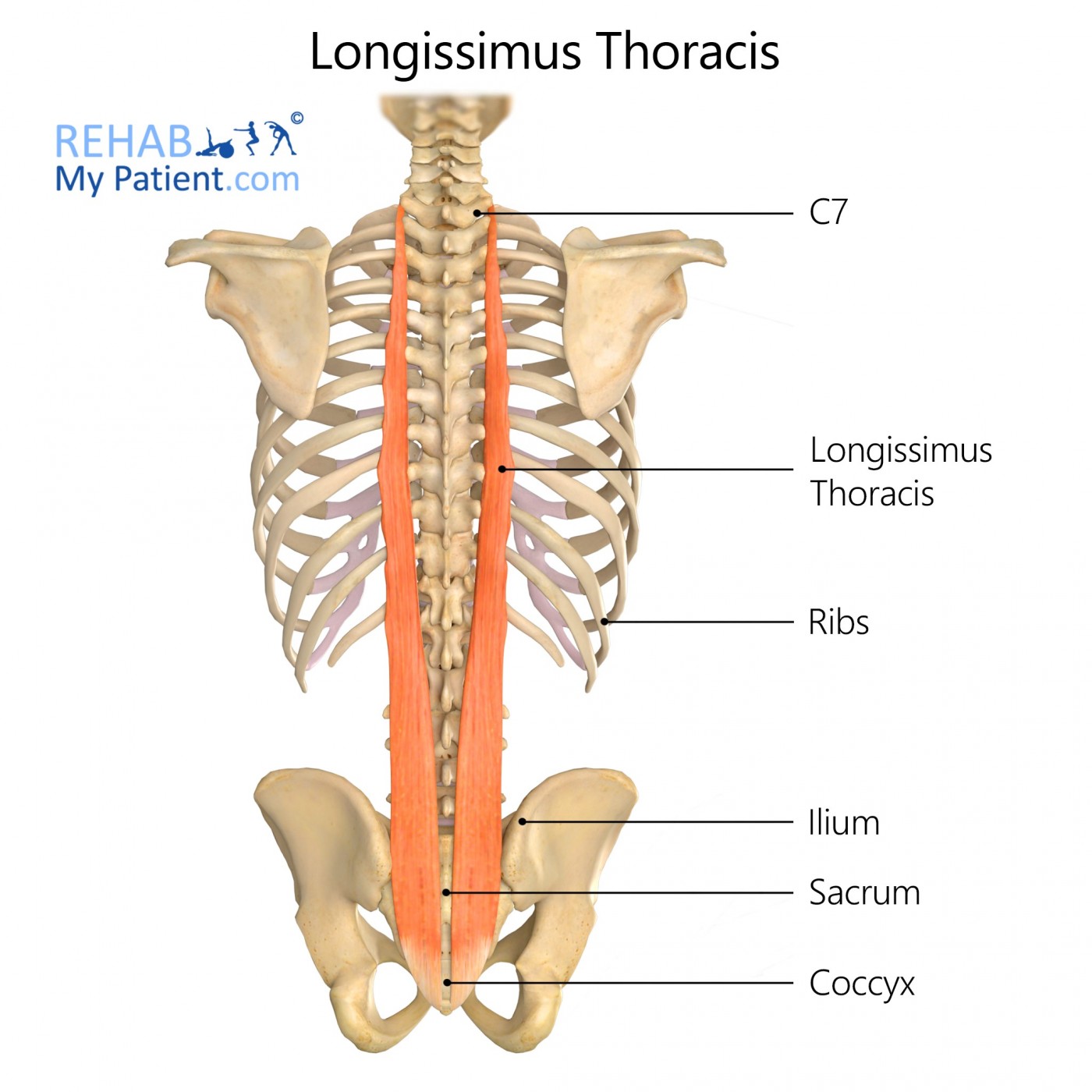Longissimus Thoracis
Opublikowano dnia 27th Jul 2020 / Opublikowano w: Odcinek piersiowy kręgosłupa

General information
The longissimus muscles are long intrinsic muscles in the back and form the erector spinae together with the spinalis and iliocostalis. Longissimus thoracis is the longest, thickest, and most central of the erector spinae muscle group.
Literal meaning
The longest muscle of the thorax.
Interesting information
This muscle is divided into a lumbar and thoracic portion. However, there is some dispute in the literature whether the lumbar section of the longissimus thoracis is a separate longissimus, namely the longissimus lumborum, or whether it is all part of the longissimus thoracis.
Origin
Lumbar part - Lumbar intermuscular aponeurosis, anteromedial aspect of ilium, Posterior sacroiliac ligament.
Thoracic part - Spinous and transverse processes of vertebrae L1-L5, median sacral crest, posterior surface of sacrum and posterior iliac crest.
Insertion
Lumbar part - Accessory and transverse processes of vertebrae L1-L5.
Thoracic part - Transverse process of vertebrae T1-T12, Angles of ribs 7-12.
Function
Bilateral contraction - extension of spine.
Unilateral contraction - lateral flexion of spine (ipsilateral).
Nerve supply
Lateral branches of posterior rami of spinal nerves.
Blood supply
Superior intercostal, posterior intercostal and subcostal arteries; lateral sacral and median sacral arteries.

Relevant research
In runners, the longissimus thoracis was a significant compensator for 4 out of 5 weakness conditions. Therefore, insufficient strength of the deep core musculature may increase a runner's risk of developing lower back pain.
Raabe, M. E., & Chaudhari, A. (2018). Biomechanical consequences of running with deep core muscle weakness. Journal of biomechanics, 67, 98–105.
Longissimus thoracis exercises

Back extension medium
Lie on your front, resting on the forearms. Place your arms at a 90-degree angle, as shown, and hold.
Zapisać się
Zarejestruj się już teraz, aby skorzystać z bezpłatnego okresu próbnego!
Zacznij korzystać z Rehab My Patient już dziś i zrewolucjonizuj proces przepisywania ćwiczeń, aby zapewnić sobie skuteczną rehabilitację.
Rozpocznij 14-dniowy bezpłatny okres próbny